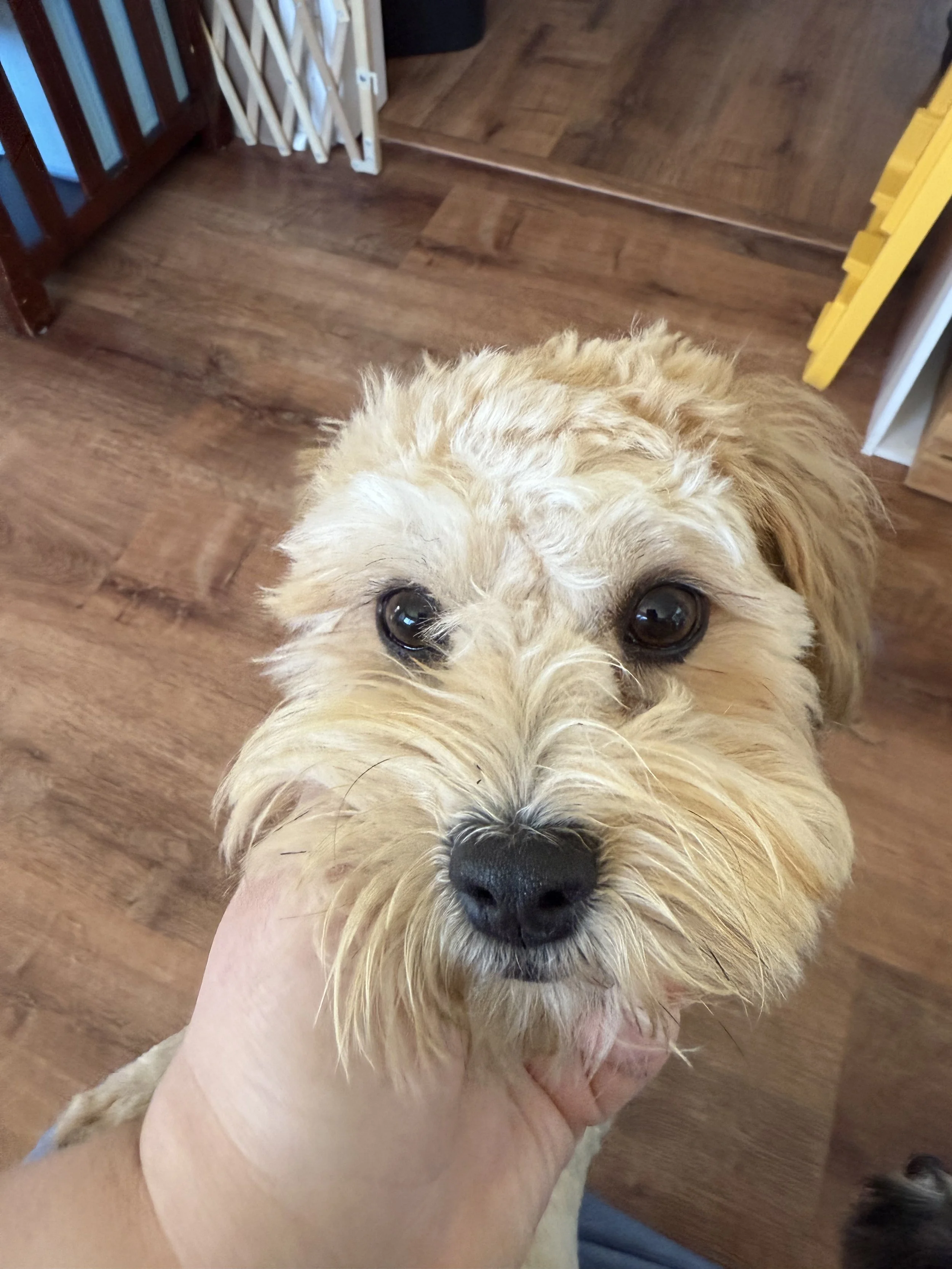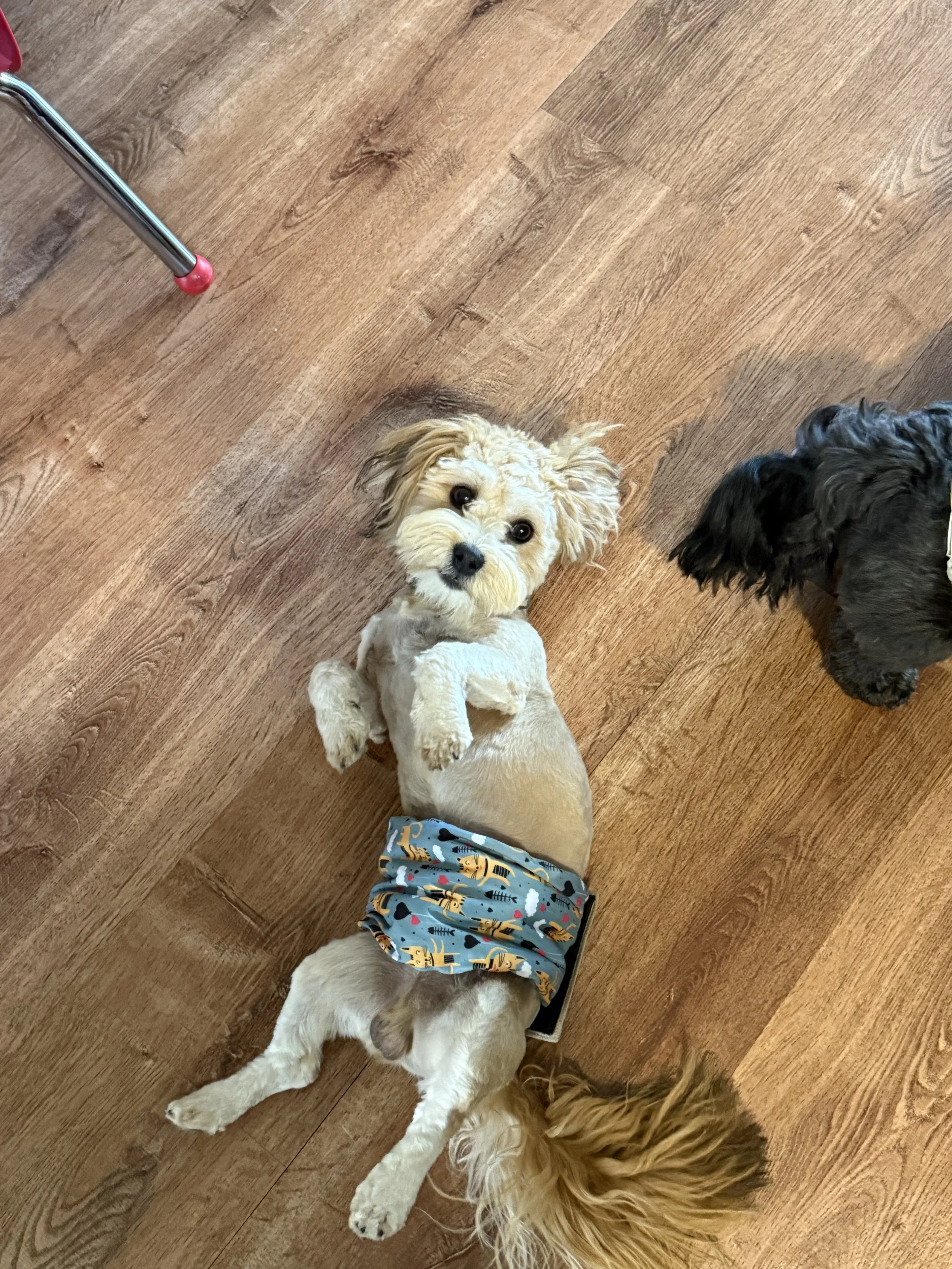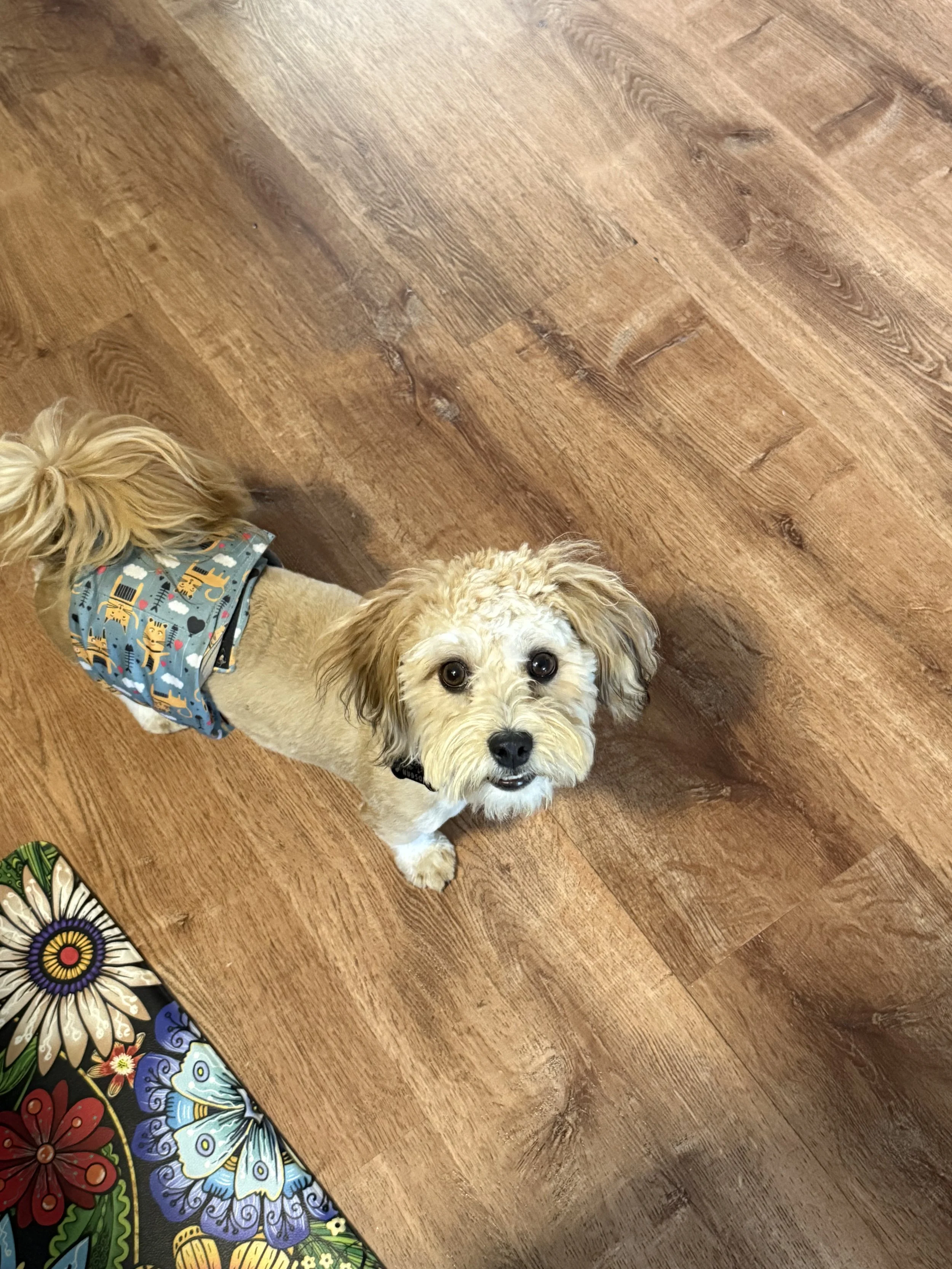Nine Month old puppy available!
Hudson is an AKC Registered purebred Havanese. He is a sweet and playful pup with lots of energy for play. He loves to just lay or play next to people and share space with his humans. He is potty trained outside and partially on a potty pad. Email us if interested.
Pictures below. Hudson is currently wearing a belly band during the day due to a female having gone into heat.
Macca (black) plays with her siblings. (Previous litter).
Havanese
The Havanese breed is ideal for someone who wants a small dog. They typically weigh between seven and 13 pounds and reach their full size by 6-8 months. They are very happy and affectionate dogs. They can be quite content with frequent walks and playing fetch in the house. They do not make good kennel dogs and fare poorly when left alone for more than a few hours.
Havanese typically live from 14 to 16 years.
KNOW YOUR BREEDER and the Havanese breed. ASK QUESTIONS!
The most basic questions to the breeder might include:
1. What are the personalities of the parents?
2. What food was the mother fed during pregnancy? What kind of environment does the mother live in?
3. How are the puppies transitioned from nursing to solids? What kind of environment are the puppies living within?
4. How are the puppies prepared for life outside of the litter?
5. Can the puppies be AKC registered?
Simon (left) and Steph (right) of one of the last litter.
The most basic questions to ask yourself, the potential owner of a Havanese puppy, might include:
1. Does our family have the time to give this puppy/dog the attention it requires and deserves?
2. Will the puppy/dog be left alone more than a couple of hours a day? Is our lifestyle such that the puppy/dog can accompany us to work?
3. Do we have the time or financial ability to take adequate care of the puppy’s/dog’s grooming needs?
4. Do we have a fenced area for the puppy/dog to play safely outside?
5. Am I able to provide daily exercise for the puppy/dog?
Are you ready to have a puppy join your family?
Tilly’s last litter playing with each other.
About the Breed
Havanese require a lot of social interaction with people. They are good with other pets and children when properly socialized. They are highly trainable and intelligent. The breed has the potential to bark excessively when not trained properly.
The Havanese has been referred to as the “Havana Silk Dog” because their hair is silky soft. A Havanese’s hair continues to grow and depending upon length may require frequent brushing and combing to avoid matting. Many owners prefer to keep their dog’s hair shorter to avoid the possibility for mats.
The Havanese dog derives from the bichon family. The dogs traveled to Cuba with Spanish farmers and aristocracy in the 1500’s. Vacationing Europeans discovered the little dogs by the 18th century and these dogs quickly became the choice of the Spanish, French and British nobility. Castro’s revolution sent Cubans fleeing to the United States with 11 Havanese dogs. These dogs became the foundation stock for the breed of today.





